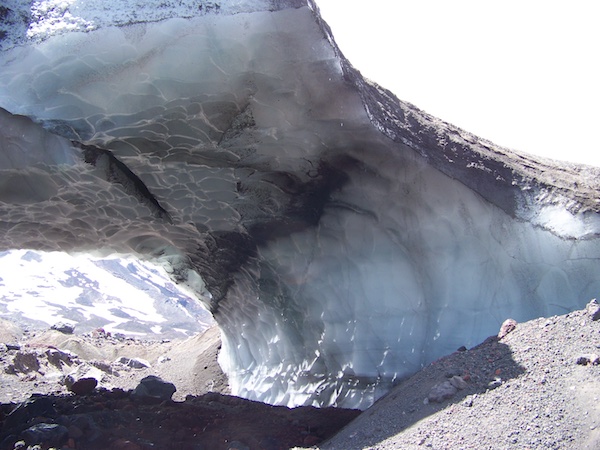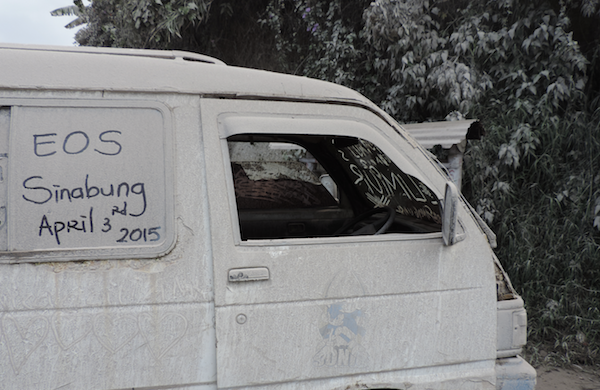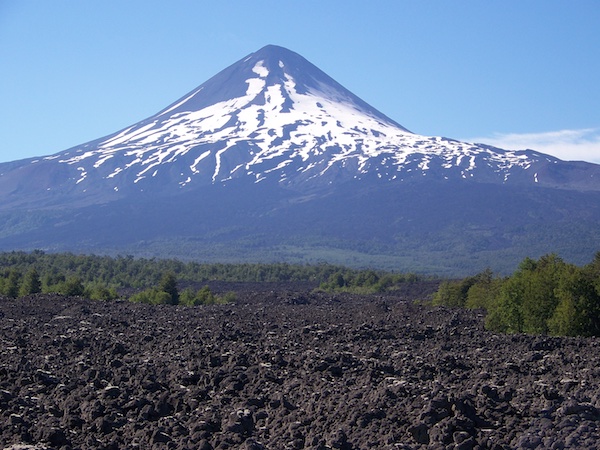French volcanologist Caroline Bouvet de Maisonneuve leaves no stone unturned while conducting research.

Whenever a new building is being constructed at Nanyang Technological University (NTU), Assistant Professor Bouvet de Maisonneuve assesses its foundations as part of an ongoing research project exploring the risk of volcanic hazards in Singapore. She is looking out for layers of volcanic ash in the soil.
Asst. Prof Bouvet de Maisonneuve’s research team compiled a database of all known volcanic eruptions in Southeast Asia. They are currently assessing a core from the Kallang River basin for traces of ash.
But safety always comes before curiosity for the 33-year-old whenever she is in the field. “It’s important to put yourself out there and be in the field,” said Asst. Prof Bouvet de Maisonneuve, a Principal Investigator at the Earth Observatory of Singapore at NTU.
“But at the same time, it shouldn’t be at the expense of anybody’s life, or risk of an injury. You have to be smart.” Beyond wearing a hard helmet, she tries to steer clear of risky situations on the ground.
She recounts a story of conducting research for her PhD in the winter of 2008. She was researching Llaima Volcano in Chile, one of the most active volcanoes in South America. It had erupted early that year, and the resultant lava melted the glacier at its summit.

“That molten lava had mixed with the water below, creating mudflows,” said Asst. Prof Bouvet de Maisonneuve. The mudflows had flushed away loose material like gravel from the sides of the volcano, damaging the road up the volcano.
The researchers who went with her wanted to climb up the volcano despite the apparent danger, but Asst. Prof Bouvet de Maisonneuve refused to do so.
“I really fought hard with them. It would have been a four-hour drive to the nearest hospital, and there was no way I could carry a 90-kilogram guy down the side of the volcano to the car if anything unfortunate had happened,” she recalled.
“That evening on their descent, they admitted that I was right and that they did not know why they were so excited about the whole thing in the first place,” Asst. Prof Bouvet de Maisonneuve said.
“It might have turned out okay, but you just shouldn’t take the risk when you’re out there.”
Her cautiousness is not without cause. Volcanoes have erupted unexpectedly in the past, despite signaling otherwise. She referred to the Galeras tragedy in 1993 as a famous example. A group of 16, led by respected volcanologist Stanley Williams, ascended the Galeras volcano in Colombia, believing that it was safe after monitoring the volcano’s seismic signals.

Williams was one of those inside its crater when the volcano had erupted unexpectedly. Nine of them, including three tourists, lost their lives in the tragedy. Williams escaped alive despite suffering severe injuries to his legs and skull.
Asst. Prof Bouvet de Maisonneuve was only nine when the Galeras tragedy happened. She met Williams after the tragedy and noted how significantly the incident had affected his life.
Volcanic Hazards in Singapore
In charge of a team of seven researchers, Asst. Prof Bouvet de Maisonneuve currently leads a team of seven in conducting the first ever research on the risk of volcanic hazards in Singapore.
While there are no known volcanoes in Singapore, the country is vulnerable to volcanic hazards from volcanoes in Indonesia and the Philippines. The closest volcano to Singapore is Mount Marapi in Sumatra, Indonesia, about 400 kilometres (km) away.
These volcanoes have produced ash that reached Singapore in the past. During the 1991 eruption of Mount Pinatubo in the Philippines, over 2000 km away, winds blew ash all the way to Singapore.
“There were photos taken of cars covered with a thin layer of ash,” said Asst. Prof Bouvet de Maisonneuve. The question remains as to the likelihood of this happening again.

While ash is likely to be less harmful to individuals than haze, it has the potential to threaten the aviation industry.
The effects can be large-scale. The 2011 eruption of Grímsvötn, Iceland’s most active volcano, led to the closure of airports in Northwestern Europe over three days.
Being Out in the Field
While research can be a mixed bag at times in terms of findings, Asst. Prof Bouvet de Maisonneuve sits up in excitement when discussing field trips to volcanoes.
“With satellite images and Google Earth, there’s so much you can already do in preparation, but when you’re in there it’s eye-opening. You understand the distribution and scale of things,” she said.
Her six-week stint on Llaima Volcano in Chile taught her a lesson in the dynamics between volcanic hazards and society.
Located within the Conguillío National Park, the Llaima volcano’s eruption in the summer of 2008 disrupted business at hotels, restaurants, and even logging activities. Locals urged volcanologists at the observatory to call for an official end to the eruption so that business could resume, but eruption signals were still ongoing. Tensions between locals and volcanologists started to rise during this difficult period.

Asst. Prof Bouvet de Maisonneuve admits that she is glad not to have the responsibility of announcing when an eruption has officially ended. Instead, she enjoys working to provide people the information they need to understand the volcanic signals, interpret them, and make better informed decisions.
Her research has brought her to five continents and over 20 volcanoes.
“You develop an affinity for all the volcanos that you actually spend some time on,” said Asst. Prof Bouvet de Maisonneuve, who does not have a favourite volcano. “They’ve all helped me to better understand volcanic processes, and the relationship between humans, society, and volcanic hazards.”